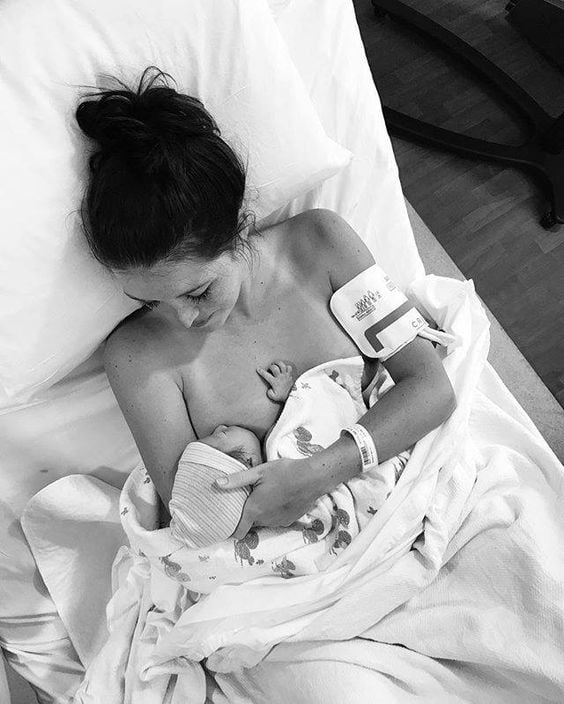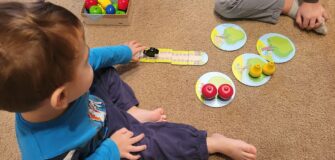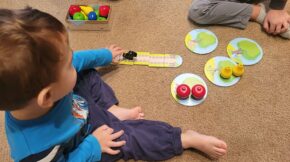Correcting Newborn’s Breastfeeding Latch Positions
Share

Motherhood is a daunting, fulfilling, and life-changing experience that comes with its own set of challenges, especially for new mothers who are learning their way around parenthood. The experience of breastfeeding may seem like a breeze for some; however, for others, it becomes quite a challenging and unnerving task.
This is because not all babies learn how to latch easily. Experts and medical practitioners are all here to help expectant mothers and new mothers by easing this process for them.
Why is this important? Breastfeeding is recommended for newborn babies because of the nutritional benefits it offers. Good nourishment is key to the good development and growth of the baby.
Something as simple as the wrong breastfeeding position in a newborn can have a deep impact on baby feeding and, consequently, their development. A baby that does not latch well can lead to distress for both the mother and the baby.
Let us walk you through a step-by-step guide on how to undo any wrong breastfeeding positions for newborns and learn the right ways to breastfeed.
What is the Appropriate Breastfeeding Latch?

Over the years, you must have an N number of relatives tell you how breastfeeding latch is a natural skill the baby has. In fact, this isn’t true; this does nothing but add pressure on the mother.
The right kind of breastfeeding is something that the mother and child learn over time and get in sync with. You will have many sessions of trial and error and understanding what works for you and your baby to get it right. Sore nipples during this learning process happen until the baby completely learns the right way to do it.
The right kind of latching involves both the areola region (the dark part around the nipple) and the nipple being in the baby’s mouth during breastfeeding. During pregnancy, it is known that this areola region gets darker.
This is believed to be nature’s way of helping babies locate it for breastfeeding. Although breast milk oozes out of the tiny openings on the nipple, the areola region, when stimulated, compresses the milk sinuses. That is when you can expect a good flow of milk for your baby.
Steps to Latch Your Baby Well During Breastfeeding

A good latch is the biggest win for both the mother and the baby. It allows for natural nourishment, good release of milk from the mother’s milk ducts, and adequate nourishment for the baby.
Here’s a stepwise rundown on how you can nail the latch.
- Get into a comfortable sitting position where you are ready to feed the baby for this. Hold the baby on one side, with the mouth directed towards the breast. The baby’s body must be facing or aligned toward the mother’s chest. Using a nursing pillow is a great way to do this. Make sure the baby is comfortable and their body is well-supported.
- In order for your baby to latch, it’s time to place your breasts in a way that suits the baby perfectly. Here’s what you can do, first place your thumb above the areola and nipple and the index finger below. The thumb must ideally be in a place where your baby’s nose lands and the index finger must be where the chin lands. Now, compress this area by pressing the index and thumb. A thumb rule is to make a shape that roughly resembles your baby’s mouth.
- Once you are ready, you have to encourage your baby to latch. For this, bring your baby close to the breast; you can start by stroking the baby’s cheek. Use your nipple to stimulate the baby’s lips. They may either just latch on or have a yawning motion. Either way, this is their cue to suckle.
- This action usually is a cue for the baby to suckle. Ensure the baby takes in both the areola and the nipple fully into the mouth. In some cases, if the areola is large or the baby doesn’t take all of it, it’s okay. Just ensure that a majority of the areola and the nipple are in the baby’s mouth.
How Do You Know Your Baby Has Latched?

Okay, now that you have followed all the steps, how do you know your baby has latched well for breastfeeding? There are signs you can look for to know if your baby has latched well.
This involves looking out for the placement of the nose and chin. When the baby’s nose and chin are in complete contact with the breast, it can be assumed that the baby has latched on well.
However, one of the most obvious signs of breastfeeding is how the baby is suckling. When the baby is breastfeeding well, their mouth fully encompasses the areola, with the lower tongue placed outward, almost like a fish mouth motion. Baby will also immediately get into the rhythm of suckling.
This pattern is a suck-swallow-breathe rhythm that the baby follows during breastfeeding. These are tell-tale signs that your baby is breastfeeding well.
What are the Best Positions that Encourage Good Latching?

If your positioning is off, you are setting yourself up for failure when it comes to breastfeeding. Wrong breastfeeding positions for newborns can become a nightmare for both of you. Get into a rhythm of how you position, where you sit, and how you nurse your baby. This is helpful for both the mother and the baby to get into the flow of things.
Here are a few things you can play around with till you find a rhythm that fits you best. This includes
- The Cradle Hold Position: Often, you see mothers holding the baby in the arm that is opposite from the breast. However, you can instead go for a more cradle hold. Wherein you can place the baby in the arm that is the same side as the breast you are choosing to feed from. Using a pillow as a cushion or for comfort is also a great support for the mother and the baby.
- The Crossover Position: This is one of the most common positions practiced during breastfeeding. Here, the baby is held in the arm that is opposite to the breast. For example, if you are looking to feed your baby from the left breast, you hold the baby in the right arm. This is preferred because the baby aligns well with the breast naturally in this position.
- Football Hold: The perfect position for people who have had twins, have large breasts, or have smaller babies. This position requires you to place your baby on the side, face towards the breast, and legs tucked under the arms, just like how footballers hold football between their arms and the side. It is also great for people who have had a painful experience with a C-section and do not want to pressure the stomach.
- Laying Position: Mothers need comfort above everything else. The experience of motherhood is challenging enough; any rest can be useful. Laid back position involves laying your back against support. In this position, you do not need to hold the baby much. The weight can just naturally be on your chest/ body because they are lying on the chest.
- Side Feeding Position: Especially great for those late-night feeding sessions that inadvertently happen during the initial phases. In this position, the baby and the mother lie side to side, facing each other. Both of your stomachs must face one another. However, make sure that safety measures are maintained. Before side-to-side best breastfeeding, remove any loose blankets or pillows around to avoid any accidental injuries.
Common Latching Errors You Can Work on for a Better Latch

- Baby out of line – Babies need to face the mother’s breast while feeding; hence ensure your baby is turned in your direction. Or else you could end up with a poor latching phase.
- Nipple Position – Sometimes, a tired mom or a distracted baby can lose the original position they were placed in. Resulting in the baby going too far away from the nipple. Keep periodic checks to ensure the baby’s nose and chin are in contact with breasts as the baby feeds for ideal feeding.
- Inadequate Milk – Sometimes, latching issues are not just about the position but also about the amount of milk; if the baby isn’t getting any milk on sucking, they will unlatch.
- Flat Nipples – Some women may have flat or inverted nipples. These nipples can become an issue for the child. Although difficult, it is not impossible for the baby to feed on.
Signs that the Baby isn’t Latching Well

Although you have used all possible techniques, it can be quite tricky to nail it at first. Therefore, you need to look out for signs that your baby may not be latching well. From the wrong breastfeeding positions for newborns to chewing, many things can go wrong.
Chewing: For example, if you see your baby chewing around the nipple area instead of using gums for stimulation, it is incorrect. This will only result in sore, painful nipples. In such a case, it is advised to unlatch the baby and try the right latching technique again.
Clicking Noises: You must have heard of babies that make a clicking sound when they suck. This means they’re not sucking well and not really drawing milk. This can result in bruising or pain. In addition, the baby hasn’t really had milk well.
Fussing Baby: A breastfeeding baby must ideally be focused on one core task: drinking milk well. However, if you observe that your baby is fussing about a lot, not sucking well, or making noises while sucking, then unlatch. The baby may be taking in more air and not getting much milk at all.
Conclusion
Breastfeeding mothers end up getting sleepless nights from all the stress around breastfeeding. With endless unsolicited advice all around, sticking to widely accepted, tried, and tested routines is important. In addition to learning the right breastfeeding technique, being attuned to the reactions of the baby is key.
Because every baby will express their needs differently, your baby may have very specific ways of expressing they are hungry, or they have latched, or that they are full. Listen to your baby’s needs, trust your gut, and do the right thing. Mothers instinctively do a good job of safeguarding their babies.
So trust yourself, and go ahead and explore this wandering journey of breastfeeding and motherhood.
Frequently Asked Questions
What Causes Poor Latch Breastfeeding?
Various factors can result in a poor latch. This could include not babies not falling into a set pattern of swallowing and breathing. Poor positioning, pushing, or forcing breasts into the baby could make it difficult.
How Can My Baby Latch Strongly?
Ensuring the baby’s body is close to you is important. Use your hand to make sure you hold your breast and align it with the baby’s mouth. Gently press or direct it to the baby in a way that the chin is underneath the areola, touched to the breast.















